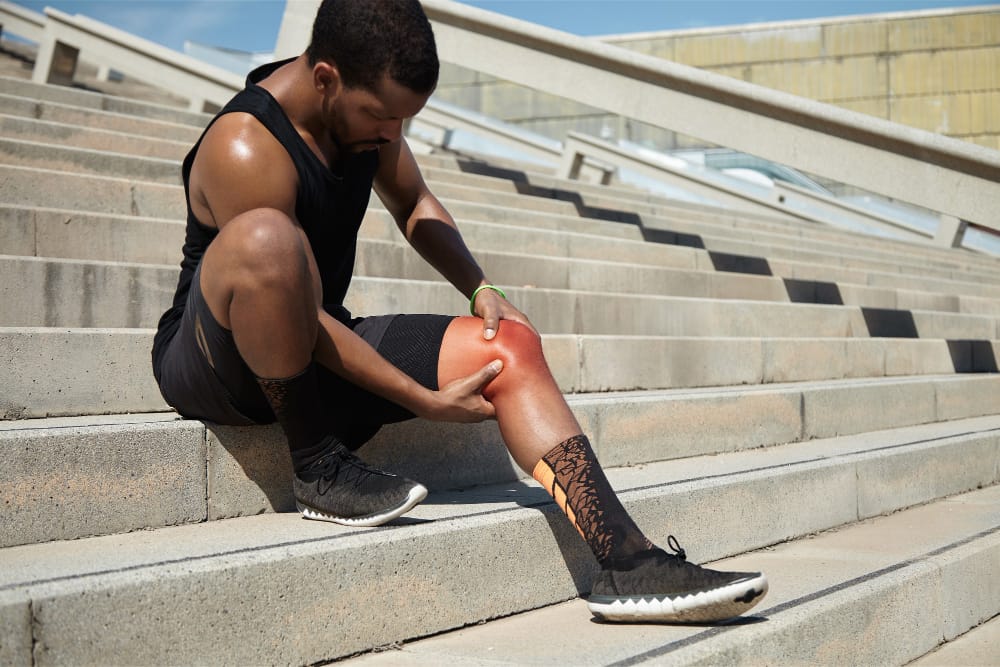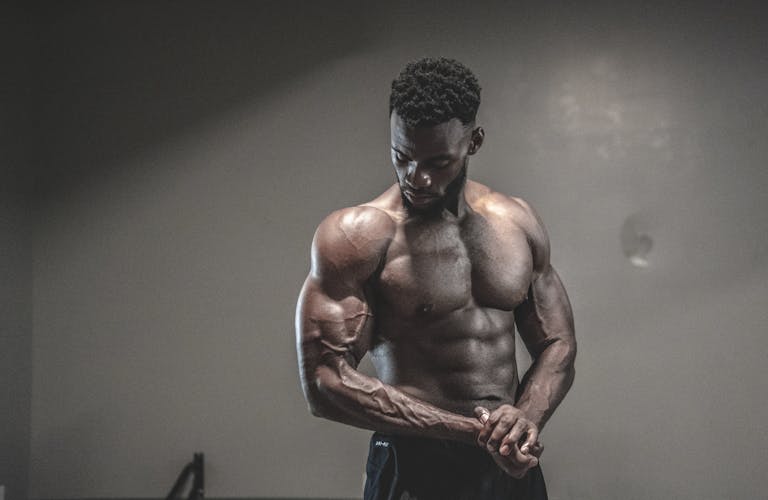FREE SHIPPING OVER $50
Squats Hurting Your Knees? These 4 Fixes Changed Everything for Me

I still remember the day I decided to stop squatting. My knees would ache for hours after every leg workout, a dull, nagging pain that made it hard to even walk up stairs. Friends and even some trainers would tell me, “Squats are bad for your knees.” I believed them. I was convinced that this fundamental exercise was simply not for me. I was missing out on one of the best exercises for building a strong, functional body.
What I didn’t realize was that the problem wasn’t the squat itself; the problem was my execution. The pain was a symptom of a deeper issue, a signal that my body was out of alignment. Once I understood the real culprits behind my knee pain and implemented a few simple, intentional changes, everything changed. I went from avoiding squats to making them a cornerstone of my fitness routine, all without a hint of pain. If you’re struggling with the same issue, I’m here to tell you that you don’t have to give up on squats. The answers are simpler than you think.
The Squat: A Fundamental Human Movement
Before we talk about the problems, let’s remember why the squat is such a critical exercise. It’s more than just a way to build muscle. It’s a foundational human movement we perform every day, from standing up out of a chair to picking up a child or a heavy box.
- A Full-Body Exercise: The squat is an incredible compound movement that works multiple muscle groups at once, including your quads, hamstrings, glutes, and core.
- Builds Functional Strength: By training your body to move properly under load, you’re not just getting stronger in the gym; you’re building the kind of strength you need for everyday life.
- Improves Joint Health: When done correctly, a squat can actually improve the joint health of your knees, hips, and ankles by increasing blood flow and strengthening the muscles that support them.
The idea that squats are inherently bad for your knees is a myth. The pain you feel is almost always a sign that something is wrong with your squat form or the way your body is prepared to handle the movement.
Why Squats Hurt Your Knees: The Real Culprits
For me, the pain was a result of three key issues. I was so focused on going up and down that I ignored the mechanics of the movement.
- Bad Form and Mechanics: The most common cause of squat pain is improper form. Things like letting your knees cave in, letting your heels lift off the ground, or not hinging at your hips can all place undue stress on your knee joints.
- Lack of Mobility: The squat requires a certain degree of mobility in your ankles, hips, and thoracic spine. If any of these areas are tight, your body will compensate, and that compensation almost always falls on the knees.
- Weak Supporting Muscles: Your glutes and core are the powerhouses of the squat. If these muscles are weak or inactive, your knees will take on more of the load, which can lead to pain and injury over time.
The 4 Fixes That Changed Everything
When I finally sought out expert advice, I was given a simple, four-part plan that completely transformed my squat. I’m not exaggerating when I say that it made all the difference.
Fix #1: Mastering Your Form, Step-by-Step
This was the most critical part of my journey. I realized I was focusing on the “up and down” of the squat and not the “how.” The goal isn’t just to move a weight; it’s to move with perfect mechanics.
- How I learned it: I started with simple bodyweight squats and recorded myself from the side. I paid close attention to my knees, making sure they tracked directly over my toes. I learned to initiate the movement by sitting my hips back as if I were sitting in a chair, keeping my chest up and my spine straight.
- Why it works: Perfecting your squat form ensures that the load is distributed correctly across your muscles, especially your glutes and quads. This takes the pressure off your knees, allowing them to move freely and without pain.
Fix #2: Unlocking Your Mobility
My knees hurt because my hips and ankles were too tight to allow for a proper range of motion. This forced my knees to take the brunt of the movement.
- How I learned it: I started incorporating simple mobility drills into my daily routine. Before every workout, I would do ankle rotations, ankle rocks, and hip openers like the pigeon pose. This wasn’t a chore; it was a way of freeing my joints.
- Why it works: Improving mobility gives your body the freedom to move correctly. When your ankles and hips can move through their full range of motion, your knees can stay in a safe, stable position throughout the entire squat movement.
Fix #3: Strengthening Your Glutes and Core
I thought I had to squat to build a strong lower body, but in reality, I had to build a strong lower body to squat safely. My glutes and core were not strong enough to support the movement.
- How I learned it: I started incorporating dedicated glute and core exercises before I even touched a barbell. I would do glute bridges, clamshells, and planks. These exercises activated my glutes and strengthened my core, so when it was time to squat, those muscles were ready to do their job.
- Why it works: Your glutes are the prime movers in the squat; they are what drive you back up. A strong core is what keeps your spine stable and your hips in the correct position. When these muscles are strong, they take the pressure off your knees and allow you to lift heavier and move more efficiently.
Fix #4: The Power of a Proper Warm-Up
I used to think a warm-up was a quick 5 minutes on the treadmill. I was wrong. A proper warm-up prepares your body for the specific movements you are about to perform.
- How I learned it: I started doing a dynamic warm-up. I would foam roll my quads and glutes, do ankle rotations, perform a few bodyweight squats to activate my muscles, and then do a few sets with a very light weight.
- Why it works: A dynamic warm-up increases blood flow to your muscles, improves joint mobility, and activates the muscles you’re about to use. It’s like turning on the engine and letting it warm up before you hit the gas pedal. This simple, 10-minute routine made my squats feel smoother, more powerful, and completely pain-free.
A Long-Term Solution
These fixes aren’t just a temporary solution for knee pain. They are a long-term approach to joint health and fitness.
- Listen to Your Body: This is the most important lesson of all. If you feel a sharp, stabbing pain, stop. Pain is a signal that something is wrong.
- Prioritize Form Over Weight: Don’t chase a heavier lift at the expense of your form. Master your bodyweight squat first, and when you’re ready, add weight slowly and progressively.
Your Action Plan: How to Squat Pain-Free
You can start your journey to pain-free squats today.
- Record Your Squat: Use your phone to record a few bodyweight squats from the side. Watch the video and look for any of the common mistakes mentioned above.
- Do the Mobility Drills: Spend 5-10 minutes a day on ankle and hip mobility drills.
- Add the Supporting Exercises: Before your leg workouts, do a few sets of glute bridges and planks to activate those muscles.
- Execute the Warm-Up: Dedicate at least 10 minutes to a dynamic warm-up before every squat session.
Conclusion
The myth that squats are bad for your knees has kept countless people from experiencing the benefits of one of the most powerful exercises. The truth is, squats are not the enemy; improper form and a lack of preparation are. By making these four simple fixes a part of your routine, you can build a stronger, more resilient body, all while protecting your joint health. It’s time to stop fearing the squat and start using it to transform your fitness.
Related Articles
- Sore After Workouts? These 10 Cool-Down Exercises Ease Pain and Boost Flexibility Fast
- Over 60 and Fitter Than Most 30-Year-Olds—This Couple’s At-Home Routine Is Shocking Trainers
- Beginner to Fit in 30 Days—No Gym, No Excuses, Just Results
- 30 Days. 3,000 Biceps Curls. The Results Were Not What I Expected
- The Swiss Ball Leg Curl: The One Move That Builds Hamstrings and Core—Fast
- Over 50 and Not Seeing Muscle Gains? Here’s the #1 Mistake—and How to Fix It Fast







